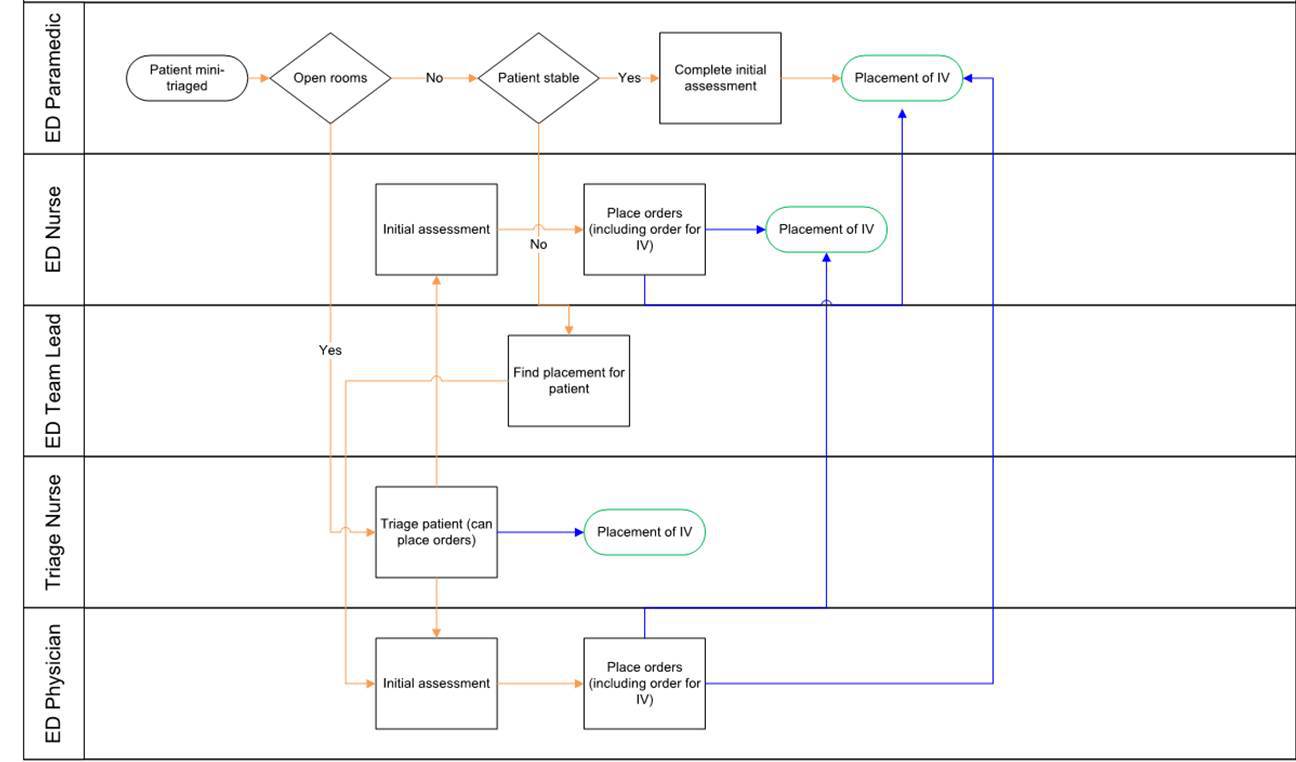
|
INTRAVENOUS ACCESS IN GASTROINTESTINAL BLEEDING: AN OPPORTUNITY FOR QUALITY IMPROVEMENT USING DMAIC METHODOLOGY AND A FORMAL QUALITY IMPROVEMENT TEACHING CURRICULUM IN AN INTERNAL MEDICINE RESIDENCY TEACHING PROGRAM Andree Koop*, Neej J. Patel, Colt Cowdell, Lee Speicher Mayo Clinic Florida, Jacksonville, FL Background: Quality improvement (QI) is important for practice improvement, and a requirement for residency and fellowship training by the Accreditation Council for Graduate Medical Education (ACGME) to systematically analyze and improve practice. Acute gastrointestinal bleeding (GIB) is associated with substantial morbidity, and while current guidelines for the management of GIB recommend 2 large-bore intravenous (IV) lines, adherence to this recommendation is low, estimated to occur in less than 20% of hospitalized patients. We present a QI project developed through a formal Internal Medicine (IMED) residency training program teaching curriculum to improve IV access in GIB. Methods: The QI project was performed as part of an IMED Residency QI Curriculum. The curriculum involved the creation of 5 QI projects with a faculty mentor among IMED residents. Monthly lectures during morning report were dedicated to QI topics relevant to QI project stage and followed by small group conferences to facilitate project progression. A QI project to improve IV access in GIB was designed and implemented with the six sigma define, measure, analyze, improve, and control (DMAIC) methodology to meet requirements for Gold Project Qualification as set forth by Mayo Clinic's QI Academy. Results: In the define phase, a project charter and aim statement were created. Stakeholders for IV access were identified including patients, paramedics, ancillary staff, and physicians. In the measure phase stakeholder knowledge of IV access was assessed with a survey, and a swim lane diagram was used to visualize the process for IV access placement in the Emergency Department (figure 1). We identified lack of a standardized process for appropriate placement of IV access as a barrier to care. Also in the measure phase, a retrospective chart review of 100 GIB patients admitted sequentially between 1/1/17-5/31/17 was performed. Only 14/100 patients had adequate IV access as defined by two large bore IVs (18 gauge or larger). In the analyze phase a fishbone diagram (figure 2) was used to identify factors contributing to the problem and areas for improvement. The improve phase, which is underway, focuses on utilizing a GIB order set in the electronic medical record to improve IV access for patients in the emergency room presenting with GIB. The counter balance measure was length of stay in the Emergency Department. Discussion: Using structured DMAIC methodology through a formal IMED residency teaching curriculum, a QI project was designed to improve IV access in patients hospitalized with GIB and to design a study intervention which is ongoing. Despite available guidelines recommending large bore IV access in patients with GIB, only 14% of patients met this criteria. A formal teaching curriculum may enhance QI education among residents and fellows. 
Figure 1: Swim lane diagram illustrating the process of IV placement in the emergency department. Back to 2018 Posters |
|||||||||||||||
© 2026 Society for Surgery of the Alimentary Tract. All Rights Reserved. Read the Privacy Policy.
